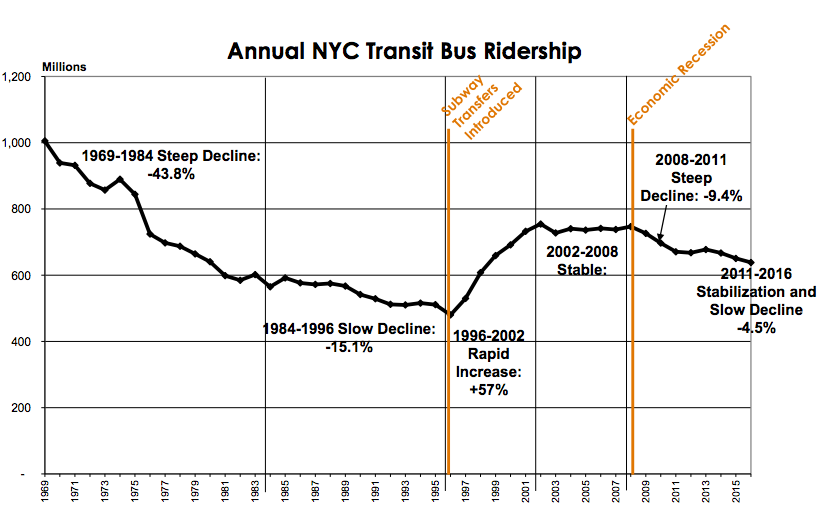If the first step to better citywide bus service is admitting that NYC has a problem, yesterday's MTA Board meeting was a breakthrough. Faced with a concerted campaign to reverse the cycle of slower buses and falling ridership, the MTA is starting to acknowledge that it needs to take bolder steps to make buses faster and more reliable.
At the board meeting, MTA Chief of Operations Planning Peter Cafiero presented a set of strategies to address falling bus ridership [PDF]. The ideas echoed messages from the Bus Turnaround Coalition, which came out with recommendations to improve bus service last summer. What's still lacking is a comprehensive implementation plan.
The MTA wants to expand improvements currently concentrated on Select Bus Service routes -- like bus lanes, faster fare collection, and bus priority at traffic signals -- throughout the bus network. Cafiero said the agency is working with the city to identify locations that could benefit from either full SBS or pieces of the SBS toolkit.
Currently, bus lanes are in place for only 5 percent of the citywide bus network, said Cafiero, and many don't work very well. The M101 Lexington Avenue bus lane, he noted, is filled with delivery vehicles and therefore "really never is effective."
Cafiero seemed to favor speeding up the boarding process with a citywide proof-of-payment system, instead of the one-MetroCard-at-a-time process that bogs down buses today, though he didn't commit to it. In a departure from previous MTA statements, he did not cite fare evasion as a reason to avoid proof-of-payment.
"We need to study how to make our new open payment system compatible with proof-of-payment," Cafiero said.
Cafiero also said the MTA wants to "right-size" its bus network and "shift resources from declining routes to areas and routes that are growing and need additional buses."
The presentation was a palpable departure from previous MTA statements brushing off the urgency of addressing systemwide problems with bus service, but as board member Veronica Vanterpool pointed out, the agency didn't furnish a timeline or work plan to implement these strategies.
A firm timetable could help avoid dragging out implementation for years. Witness the rollout of transit signal priority, which holds green lights for approaching buses and has been shown to improve travel times 10 percent. The MTA says it's moving to equip the entire fleet with TSP and will work with DOT to determine which signals will prioritize buses. But TSP has already been a long time coming.
Two years ago, three routes had the technology, and today only five are equipped with TSP (there are plans for the M60 and Q44 to receive it this year). Last year the agency purchased 75 buses with on-board Wi-Fi but no signal priority tech.





